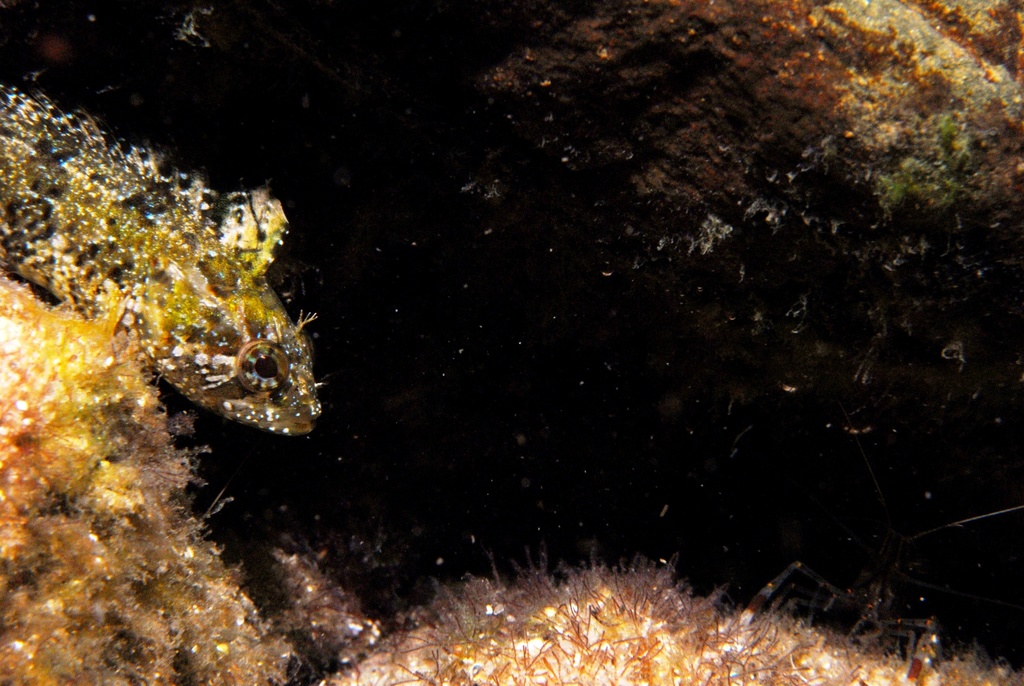In 2011, this Common Weedfish, Heteroclinus perspicillatus, was stalking a Rockpool shrimp, Palaemon serenus, which it later consumed.
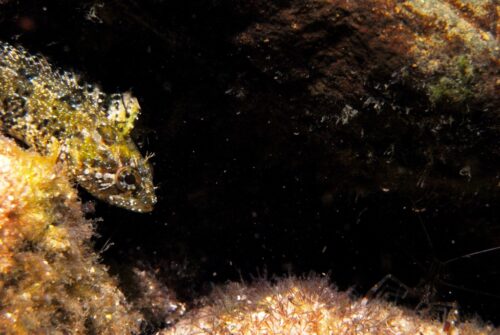
Both these weedfishes and shrimps are very common in these particular tide pools and channels at Haycock Point, Carrickalinga.
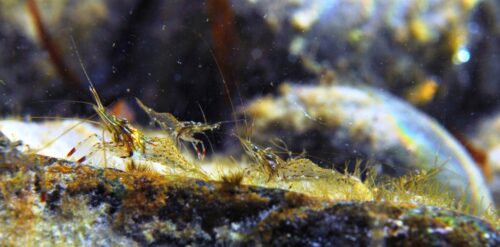
The weedfishes and shrimps often appear at peace with each other, depending on time, tide, and other variables. Indeed, Common Weedfish are often clients to this shrimp species when they need cleaning.
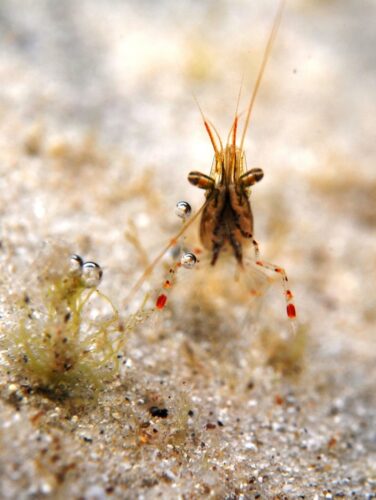
I am unable to rule out the possibility that this weedfish is ‘double dipping ‘. By this, I mean that it might be almost simultaneously in client mode (with the cleaner host(s) only barely discernible (white claws and maybe the red blotch) behind and above the fish) and predator mode (refer opening sentence; the prey was the more easily seen rockpool shrimp near lower right corner).
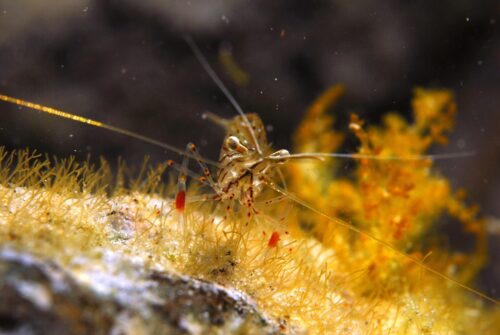
This is only speculation, however, but I think that it is plausible, and would not be the first example from the animal kingdom.
Anyway, two things are certain. One is that I’ve often witnessed Common Weedfish stalking and then eating Rockpool shrimp. The other is that I have often (including at the same locations and even during the same snorkel outings) witnessed Common Weedfish being cleaned by one or several Rockpool shrimp. This complex relationship would make evolutionary sense, because in the shallowest suitable weedfish habitat there are no other available cleaner hosts, and the single available host species is always present in high densities.

(Within the currently considerable limits of my and others’ knowledge as to what host options are available for Common Weedfish in their niche habitat – So far the Rockpool Shrimp is the only host cleaner I’ve consistently seen in action at these intertidal to shallowest subtidal rock reef sites. If these Common Weedfishes (that mostly reside in, and are usually encountered in, the shallowest areas) do venture out to slightly lower subtidal depths for cleaning purposes, the number of potential hosts increases to include e.g. Western Cleaner Clingfish and juvenile Moonlighters. But I’ve never witnessed either cleaning a clinid.)

